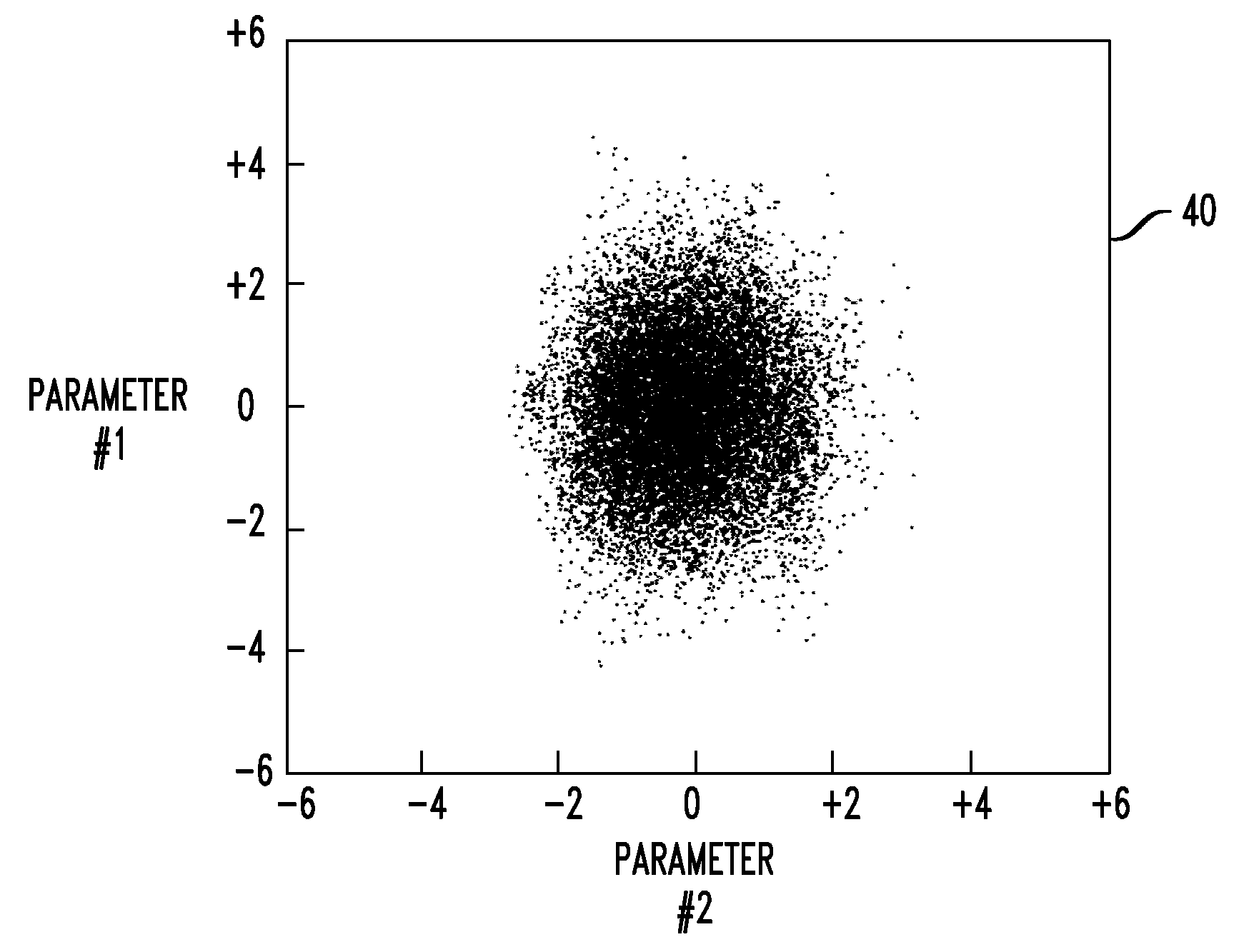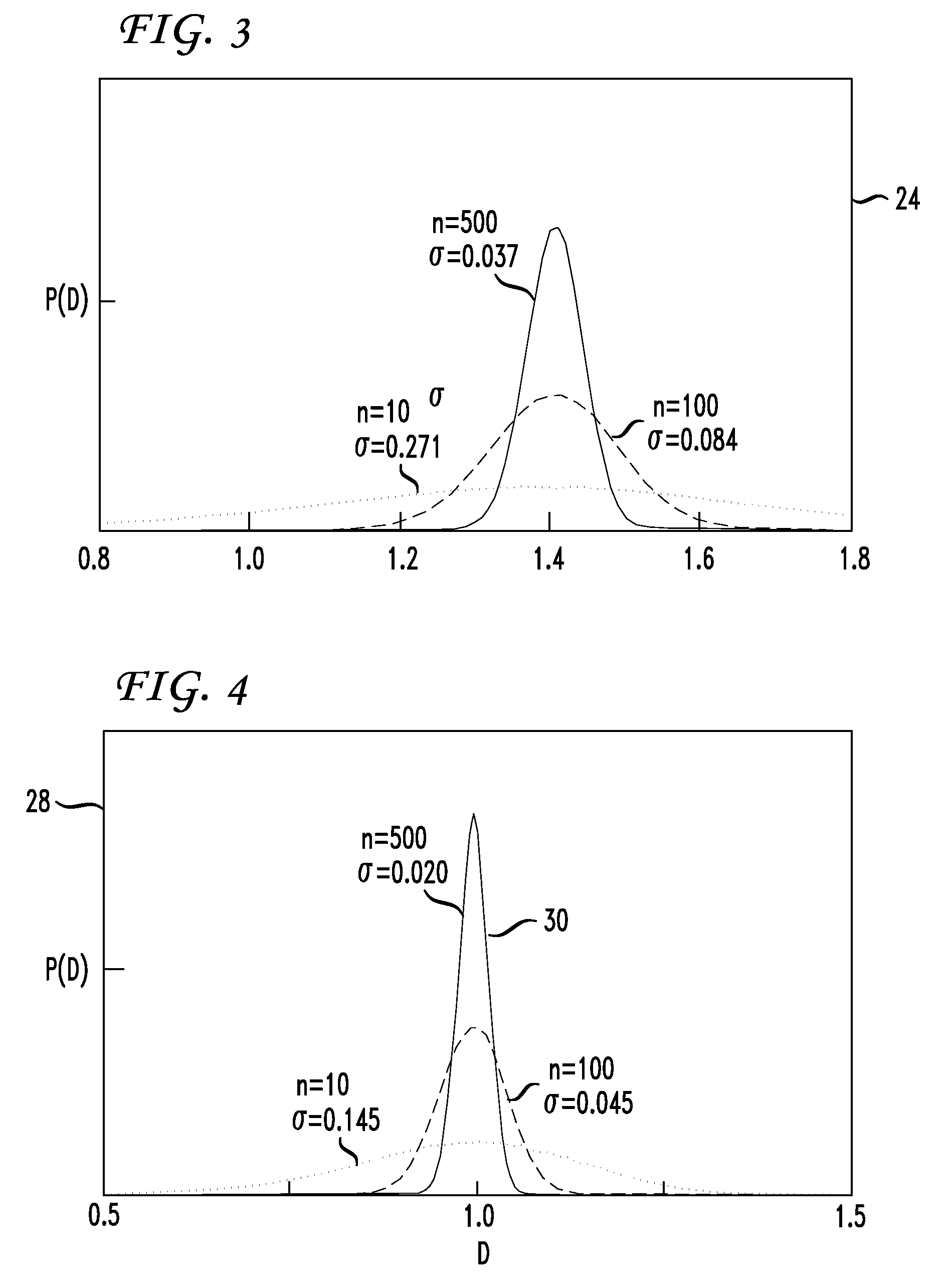System and method of pattern recognition in very high-dimensional space
- Summary
- Abstract
- Description
- Claims
- Application Information
AI Technical Summary
Benefits of technology
Problems solved by technology
Method used
Image
Examples
Embodiment Construction
[0037]The present invention may be understood with reference to the attached drawings and the following description. The present invention provides a method, system and medium for representing phonemes with a statistical framework that sharpens the boundaries between phoneme classes to improve speech recognition. The present invention ensures that probabilities for correct and incorrect pattern recognition do not overlap or have minimal overlap.
[0038]The present invention includes several different ways to recognize speech phonemes. Several mathematical models are available for characterizing speech signals. FIG. 2 illustrates a model that relates to a probability between two points A and B in a hypersphere 20 that is predicted using a fairly complex probability density function. In large dimensional space, the distance AB between two points A and B is almost always nearly the same, which is an unexpected result. The hypersphere 20 of n-dimensional space illustrates the mathematical...
PUM
 Login to View More
Login to View More Abstract
Description
Claims
Application Information
 Login to View More
Login to View More - R&D
- Intellectual Property
- Life Sciences
- Materials
- Tech Scout
- Unparalleled Data Quality
- Higher Quality Content
- 60% Fewer Hallucinations
Browse by: Latest US Patents, China's latest patents, Technical Efficacy Thesaurus, Application Domain, Technology Topic, Popular Technical Reports.
© 2025 PatSnap. All rights reserved.Legal|Privacy policy|Modern Slavery Act Transparency Statement|Sitemap|About US| Contact US: help@patsnap.com



